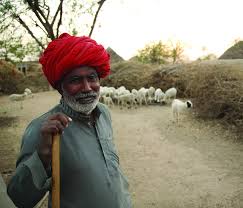UN Convention On Combating Desertification (UNCCD) Report On Rangelands And Pastoralists:

A UN Convention on Combating Desertification (UNCCD) report on rangelands and pastoralists has said that millions of pastoralists in India need better recognition of their rights and access to markets.
Key Findings of the UNCCD Report:
- Rangelands cover 80 million square kilometres, which is 54% of the earth surface, constituting the largest land cover/use type in the world. Of this:
- 78% occur in the drylands, mainly in the tropical and temperate latitudes
- 12% is protected rangelands worldwide.
- Around 40-45% of these lands are degraded, posing a threat to one-sixth of the world’s food supply and one-third of the planet’s carbon reservoir.
- Rangelands generate 16% of global food production and 70% of feed for domesticated herbivores, most significantly in Africa and South America.
Almost half of the world’s rangelands are degraded due to climate change, population growth, land-use change and growing farmlands. - In India, rangelands occupy about 1.21 million square kilometres, from the Thar Desert to Himalayan meadows.
- As per report, less than 5% of India’s grasslands are within protected areas, and the total grassland area decreased from 18 million hectares to 12 million hectares between 2005 and 2015.
- The area used for grazing is estimated at around 40% of the total land surface of India.
State of Pastoralist and Economic Contributions in India:
- Globally, an estimated 500 million pastoralists are involved in livestock production and allied occupations.
- There are around 13 million pastoralists in India, across 46 groups including Gujjars, Bakarwals, Rebaris, Raikas, Kurubas, and Maldharis.
- According to the 2020 report “Accounting for Pastoralists in India,” India holds 20% of the world’s livestock population and approximately 77% of the animals are raised in pastoralist systems, where they are either herded or allowed to graze on common lands.
- Pastoralists contribute to the economy through livestock rearing and milk production.
- The livestock sector contributes 4% to the national GDP and 26% to the agricultural GDP.
- The report highlighted that laws, such as the Forest Rights Act of 2006, have aided pastoralists in securing grazing rights across various states in the country.
About Rangelands:
- Rangelands are vast natural landscapes primarily used for grazing livestock and wildlife.
- They are dominated by grasses, shrubs, and open-canopy trees.
About Pastoralists:
- Pastoralists are people who raise livestock on natural pastures.
- They often lead a nomadic or semi-nomadic lifestyle, moving their herds seasonally to access fresh pastures and water sources.




